Earwigs
Despite their scary appearance and reputation, earwigs are not directly harmful to humans. In fact, they are often beneficial, acting as scavengers of decaying matter and predators of insect larvae, slug eggs, aphids, and other garden pests.1
It is best to treat the infestation outside in order to manage any earwigs coming inside your home.
-
While decaying organic matter forms the largest part of their diet, earwigs also feed on the tender shoots, leaves, and blossoms of flowering plants and vegetables. 1
-
Earwigs, being also carnivorous, are predators of insect larvae, slug eggs, aphids, and other garden pests. They sometimes even eat each other.1
-
During the day they hide in cool dark, and moist places.
-
They become more active, looking for food, at dusk when the temperature cools down
Prevention:
The best time to begin control measures is early spring, during dry, warm weather, when the earwigs are young.1
-
Cultivate the soil to disturb earwigs that lived through the winter and expose newly laid eggs to the dry surface where they are less likely to survive.
-
Create a clean, low-moisture perimeter around your house foundation by trimming back vegetation and removing mulch, organic debris and other objects that can be used for shelter by earwigs.
-
Repair leaky taps and downspouts, and make sure to direct water drains away from your foundation.
-
Keep your lawn and garden free of excess debris and decaying organic matter to make it less attractive for earwigs. Don't allow grass clippings, fallen leaves, weeds, and old wood to accumulate except where organic materials are stacked for proper composting.
-
Start vegetable gardens as early as possible to give plants a head start before the young (nymphs) come out from their nests in June.
-
Remove any damaged produce in your garden right away: earwigs like feeding on fruits or vegetables that have holes or bruises caused by other insects or disease.
-
Inspect cut flowers or vegetables before bringing them in from your garden, and remove any earwigs hiding between leaves or inside blooms1
Trapping:
Take advantage of the earwigs' habit of hiding in small, dark places by setting up simple traps in areas where they commonly go for shelter.
1. Oil Trap
Supplies:
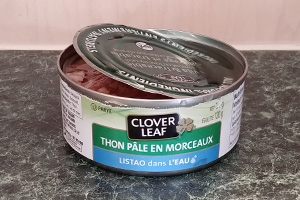
Instructions:
- Poke holes in the lid and upper side of a plastic container
- Fill container with an edible oil
- Add tuna juice to entice the earwigs to enter the container
- Check the container, and throw away when it has sufficient dead earwigs
2. Cardboard Trap
Instructions:
- Roll up corrugated cardboard and tie with elastic
- Place in earwig area ex: at the base of plants, fruit trees, or near foundation
- Earwigs will hide in the holes during the day.
- Take the cardboard and place in a pail of water and soap to kill the earwigs
- Repeat
3. Flower pots can be stuffed with moistened straw or newspaper and left upside-down on the ground, propped up with a small stone to leave space for earwigs to crawl under.
4. Hollow bamboo canes or short sections of old garden hose can be placed on the ground
Check your traps daily and drop earwigs in a pail of soapy water. Repeat the process.
Fruit Flies
Prevention:
To ensure fruit flies do not flourish remove their food sources:
-
Remove overripe produce from inside your home.
-
Store fruit in the refrigerator.
-
Wash fruit as soon as it enters your home to remove eggs or larvae.
-
Move your garbage from the kitchen regularly.
-
Clean-up fruit spills and alcohol promptly.
Control:
Make a fruit fly trap. Below are a variety of do-it-yourself traps:
1. Combine apple cider and a few drops of dish soap in a container. The soap cuts the surface tension of the vinegar so the flies will sink and drown.
2. Cover with plastic wrap and elastic band. Poke holes in the plastic wrap. The holes will let the fruit flies enter and the plastic wrap will keep them in. Use multiple traps around your kitchen.
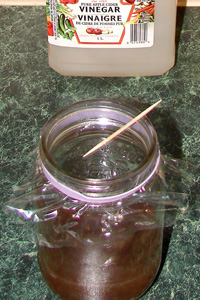
3. Pour apple cider vinegar in a container with old fruit (bananas work very well). Place a rolled up piece of paper in the jar, narrow opening down. The cone will direct them to the opening but make it difficult to exit.

4. Leave an almost-empty bottle of wine or beer out. The smell will entice the flies to enter the bottle and the skinny neck will make it difficult for the flies to exit. Adding a few drops of soap will help as well.
Bedbugs
-
insects
-
small
-
flat body
-
hide inside box springs, in mattress pads, under wallpaper, behind picture frames, in electrical outlets, in night tables
-
wingless (cannot fly)
-
feed on the blood of people and animals while they sleep (for a regular eating schedule)
-
lifespan: several weeks to up to a year and a half without eating
-
cannot jump
-
Can move from room to room by “hitching a ride” on an animal or person
Bite:
-
A reaction may not appear at all or take up to 14 days to appear on the skin, depending on the person.
-
A severe allergic reaction is rare but possible
Generally found on the:
-
face
-
Neck
-
Arms
-
Chest
Treatment:
-
Try not to scratch the bite
-
Keep bite site clean (to avoid infection)
-
Use antiseptic cream or lotion
-
Use antihistamine for itch
-
Consult doctor for more severe reaction
Prevention:
-
Get rid of clutter.
-
Vacuum often, including under and behind beds.
-
Repair or remove peeling wallpaper and tighten loose electrical faceplates.
-
Seal all cracks and crevices on wooden bed frames, between baseboards, and in walls, ceilings, windows, door frames, and furniture.
-
Check any entry points on walls that you share with neighbours, and openings that allow access to the inside of the wall (like areas where pipes, wires and other utility services enter).2
How to Avoid Them When Travelling?
Start by Checking Your Room for Bedbugs
- Don't put your luggage down on the floor or on the bed - put it in the bath tub, or on the luggage rack.
- Check the bed - mattress, zippers, seams, cushion tufts, and in behind and around the headboard.
- Check the furniture and walls, furniture frames and cushions using something with a hard corner or edge, like a credit card.
- Check in behind paintings, posters, mirrors, as well as around mouldings, trim, baseboards and window frames.
- Check cracks in plaster and peeling wallpaper.
- Take a close look at electrical outlets, light switches, phones and clocks, as well as all the carpeting rugs.3
When you return from travelling
-
Before bringing luggage into your home, place it on a hard surface away from any places bedbugs could crawl to and hide, and check it carefully.
-
Unpack your clothing and check personal items (like hairbrush and cosmetic case).
-
Wash all clothing and fabric items in hot water, regardless of whether you wore them or not.
-
Dry non-washable items in the clothes dryer on the highest heat for 30 minutes.
-
Vacuum your luggage. Throw out the vacuum bag in a sealed garbage bag right away. Wash any vacuum cleaner brush or nozzle attachments you used in hot water with detergent. For a bagless vacuum cleaner, empty the dust collector into a garbage bag, throw out the bag immediately, and also wash the dust collector in hot water with detergent.3
Regular inspection is important to prevent infestations.
-
Check every item you bring into your home for the first time, including used books, new furniture, and garage sale or antique store furniture.
-
Be very cautious with second-hand or refurbished items.
-
New mattresses are often delivered in the same truck that carries away old mattresses, so be careful to check your new mattress before it enters your home. Insist that your new mattress be sealed before it is delivered.
-
Never take a mattress or sofa from a curb.
-
Check items before you put them in your vehicle and check your vehicle after helping a friend move.
-
When you return from a trip, follow the tips described on the Public Health Agency of Canada website.2
Checking a bed for bedbugs:
-
Remove and inspect all bed linens, including pillows. If you see signs of bedbugs, wash the linens using the hot cycle of your machine.
-
Slowly lift up each corner of the mattress and examine all creases, tufts, and buttons, along each side of any piping material sewn onto the edges, along mattress handles and air holes, and under pillow tops.
-
Slowly lift up each corner and check where the box spring sits on the bed frame.
-
Look closely at the top surface of the box spring, inside folds of material, along seams, and where the fabric is stapled to the box spring. Also check along the edge of the cloth underside. If you see signs of bedbugs, flip the box spring upside-down and remove the cloth underside to look inside the box spring.
-
Check all surfaces, crevices, screws, staples, tacks, and under wooden plugs that cover screw or nail holes on the bed frame, legs, and headboard.
-
Also go over the wall behind the bed (bedbugs can hide in wallpaper and electrical outlets). Remove electrical, telephone, or cable faceplates to check behind them. Always be sure the power is turned off before opening an electrical outlet. Pay extra attention to gaps in the baseboard or rips or bumps in wallpaper.2
Removal:
Bedbugs are very hard to get rid of. If you do have bedbugs, it is strongly recommended that you hire a licensed professional pest control operator.4
Steaming, washing and throwing out items:
- Bedbugs die at 50°C and steam cleaners generally emit steam at a temperature of at least 100°C. Dry steam or low vapour steamers are better because they leave behind less moisture. Steam will only kill the bedbugs that it reaches, so move the steam cleaner slowly to maximize depth. Avoid excess moisture, which could lead to mould
- Putting small items in the freezer or outside is sometimes effective. However, freezing temperatures must be kept for a prolonged period (4 days of consistent cold at -19°C), and may not kill all of the bedbugs.
- Place small non-washable items and dry-clean-only items in a hot dryer for 30 minutes or more.
- Wash mattress pads, bedding, bed skirts, infested clothes, curtains, and so on in hot water and dry them on the hottest dryer setting. Store clean, dry items in light-coloured sealed heavy duty plastic bags or plastic storage bins with secure lids to avoid infesting other areas.
- Throw out any items that can't be washed, heated, or steam cleaned.
- Vacuum daily following the directions below.4
Vacuuming:
Handheld vacuums, vacuums with a cloth bag, and vacuums with hoses that are made of fabric are not a good idea for bedbug clean-up because these vacuums can become infested.
- Bedbugs cling to wood and fabric, and their eggs are cemented to the surface where they were laid. Using a stiff brush attachment and a back-and-forth scraping motion on the surface of the mattress, and a nozzle for the seams and crevices, carefully vacuum all sides to remove bedbugs and eggs. This includes the mattress, box spring, bed frame, baseboards, non-washable furniture cushions, any rugs and carpeting, around heating units and baseboards, and the inside and underneath all drawers and furniture.
- Let the vacuum run for a bit to make sure all bedbugs have been sucked into the bag, then dispose of the vacuum bag in a sealed white plastic bag (white plastic makes it easier to spot a bedbug), in a garbage bin with a lid.
- Stuff paper towel in the end of the vacuum hose and seal it with tape to prevent any bedbugs from escaping.
- Wash all vacuum attachments in hot water and detergent.
- Store the vacuum in a large plastic bag and seal it.
- For a bagless vacuum cleaner, follow the instructions above, but also empty the canister contents into a plastic garbage bag, seal and dispose of the bag right away, and wash the dust container in hot water with detergent.4
For more pest control tips:
Source:
1 https://www.canada.ca/en/health-canada/services/pest-control-tips/earwigs.html?wbdisable=true
4 https://www.canada.ca/en/health-canada/services/pest-control-tips/bedbugs-how-do-i-get-rid-them.html




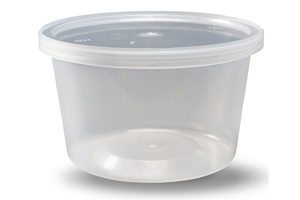


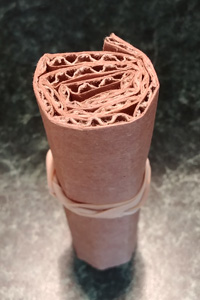


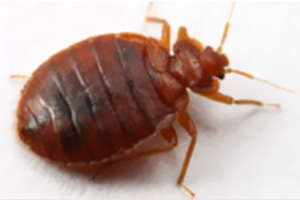
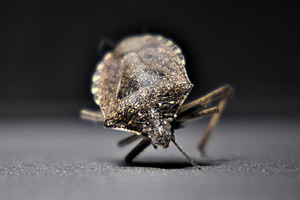

Post a comment